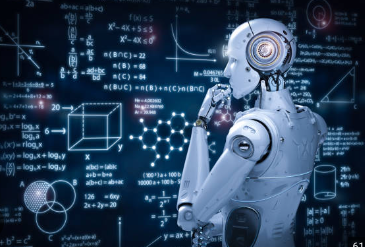Forces in modern technology. While AI enables machines to simulate human intelligence, ML allows them to learn from data and improve over time. These
Technologies are not only redefining the way we interact with digital systems but also reshaping industries, economies, and even society at large. Understanding these technologies is more important than ever as we continue to integrate AI and ML into everything from smartphones and smart
homes to financial services and healthcare. This article explores the evolution, principles, and applications.
Benefits, challenges
benefits, challenges, AI, and ML in a comprehensive and accessible manner.
1. What is artificial intelligence? Artificial intelligence refers to the simulation of human intelligence in machines. These machines are programmed to mimic cognitive functions such as learning, problem-solving, reasoning, perception, and even language understanding. The term “AI” was first coined in 1956 by John McCarthy during the Dartmouth Conference. Since then, AI has evolved from simple rule-based systems to complex neural networks capable of performing highly sophisticated tasks.
Types of AI
AI can be classified into three main categories:
Narrow AI: Performs specific tasks (e.g., voice assistants, recommendation systems).
General AI: Mimics human intelligence and can perform any intellectual task (still
theoretical).
Superintelligent AI: Surpasses human intelligence (a concept explored in the future
Speculations).
2. What is machine learning? Machine learning is a subset of AI that focuses on developing algorithms that allow computers to learn from data and improve their performance over time without being explicitly programmed for every scenario. The core idea behind ML is to enable machines to automatically discover patterns in data and make decisions or predictions based on that data.
Types of Machine Learning
Supervised Learning: The algorithm is trained on labeled data. (Example: Spam
detection in emails)
Unsupervised Learning: The algorithm identifies patterns in data without labels.
(Example: Customer segmentation)
Reinforcement Learning: The model learns by interacting with its environment and
Receiving rewards or penalties.
3. How AI and ML Work Together. While AI is the broader concept, ML is a critical driver that powers most modern AI applications. Essentially, ML provides the data-driven learning mechanism that allows AI systems to improve and adapt without human intervention. For instance, an AI chatbot uses ML to improve its responses based on user interactions. A self-driving car uses ML models to recognize traffic signs, detect
Obstacles,
4. Real-World Applications of AI and ML AI and ML have found practical use across various domains. Here are some notable
Examples:
Healthcare
Medical Imaging: ML algorithms detect diseases like cancer with high accuracy.
Drug Discovery: AI accelerates the search for new medications.
Virtual Health Assistants: Offer basic diagnostic support and medication reminders.
Fraud Detection: AI identifies unusual patterns in transactions.
Algorithmic: Models analyze market data to make trades.
Credit Scoring: AI evaluates creditworthiness beyond traditional metrics.
Retail and E-Commerce
Recommendation Engines: Suggest products based on user behavior.
Inventory Management: Predicts demand and automates stock replenishment.
Customer Service
Transportation Autonomous Vehicles: Use ML for object detection, decision-making, and navigation. Logistics Optimization: AI helps in route planning and delivery scheduling. Marketing Predictive Analytics: Identifies customer trends and behaviors. Sentiment Analysis: Evaluates public opinion from social media.
Personalized Advertising:
5. Benefits of AI and the implementation of AI and ML bring numerous benefits, including efficiency and automation. Machines can perform tasks faster and more accurately than humans, freeing up human labor for more complex responsibilities. Data-Driven Insights AI systems can analyze massive datasets and uncover hidden trends, enabling better
decision-making.
Cost Reduction
sectors.
Scalability
ML models
ML models can be trained to handle massive workloads, making them ideal for scaling business operations. Improved Accuracy: AI can outperform humans in tasks that require precision, such as medical diagnoses.
Financial forecasting.
6. Challenges and Ethical Concerns Despite their advantages, AI and ML come with significant challenges: Bias in Algorithms AI systems can inherit biases present in their training data, leading to discriminatory outcomes. For example, facial recognition software has shown racial biases due to unbalanced datasets.
Privacy Issues
AI systems often require vast amounts of personal data, raising concerns about surveillance, data breaches, and misuse. Job Displacement
Automation threatens to replace jobs, particularly in sectors like manufacturing and retail. and customer service, creating a need for reskilling and new workforce strategies.
Security Risks
AI can be used for malicious purposes such as deepfakes, automated cyberattacks, and misinformation campaigns. Lack of Transparency
Many AI models, especially deep learning systems, are “black boxes,” making it hard to understand how decisions are made. This lack of interpretability poses a serious ethical
legal issue.
7. The Future of AI and ML
The future of AI and ML is both promising and complex. Here’s what we can expect: Explainable AI (XAI). There will be a push for AI systems that are transparent and interpretable, allowing users to understand and trust AI decisions.
Edge AI
AI will increasingly move from the cloud to local devices, enabling real-time processing and reducing data transfer requirements. Artificial General Intelligence (AGI)
Though still theoretical, AGI machines with human-like intelligence remain a long-term research goal with profound implications.
Ethical and responsible AI regulations and frameworks will be necessary to ensure that AI systems are fair, accountable, and aligned with human values.
Interdisciplinary Collaboration
AI development will increasingly involve collaboration between technologists, ethicists, sociologists, and policymakers to address complex societal impacts.
Conclusion: Artificial Intelligence and Machine Learning have undeniably reshaped the technological landscape of the 21st century. What once belonged to the realm of science fiction is now a fundamental driver of innovation, efficiency,
and transformation across every major industry—from healthcare and finance to entertainment and transportation. AI
and ML are not just tools but catalysts for new possibilities, offering machines the ability to learn, adapt, and make decisions with increasing levels of autonomy and
Sophistication.
As AI systems become more powerful and widespread, society faces both tremendous opportunities and significant ethical, legal, and social challenges. Issues such as data privacy, algorithmic bias, job displacement, and decision transparency must be addressed thoughtfully to ensure the responsible deployment of AI technologies. At the same time, the potential benefits—enhanced medical diagnoses, optimized business operations, safer autonomous vehicles, and more personalized user experiences—are too great to ignore.artificial intelligence
Conclusion
The future of AI and ML lies in collaboration between humans and machines and among researchers, developers, policymakers, and users. Continued interdisciplinary research, open discourse, and inclusive development are crucial to shaping a future where AI works for everyone. As we stand on the threshold of an AI-driven world, our Focus must not only be on what these technologies can do but also on what they should
FQS
1. Are AI and ML replacing jobs?
While they automate certain tasks, they also create new opportunities. The key is to adapt the patient through reskilling and education.
2. Is AI safe to use?
AI is safe when developed responsibly. Ethical concerns like bias and misuse must be addressed to ensure safety and fairness.
3. Can I learn AI and ML without a technical background?
Yes. Many beginner-friendly courses are available online. Basic math Programming
ng knowledge is helpful but not mandatory at the start.
4. How is AI being regulated?
Several countries are developing AI regulations to address ethical concerns, especially around data privacy, fairness, and accountability.
5. What are some real-life examples of AI? 1
AI is used in voice assistants (like Siri), recommendation systems (Netflix), and fraud detection. https://liferools.com/wp-admin/post-new.php





Leave a Reply